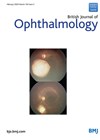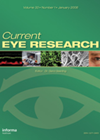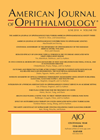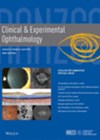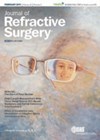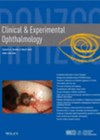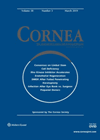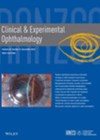
Journal Reviews
Comparison of changes in ECD and CCT between CPS and FLACS
This is an intraindividual randomised clinical trial of 134 eyes from 67 patients, one eye was treated with femtosecond laser-assisted cataract surgery (FLACS) (including pretreatment of main incision, side port, capsulotomy and lens fragmentation) and the fellow eye received conventional...
Preoperative anxiety levels and pain during cataract surgery
Increased anxiety has been shown to be associated with greater pain in a number of procedures. In this observational, non-interventional study, the authors sought to evaluate the correlation between pain with phacoemulsification surgery (under topical and intracameral local anaesthesia) and...
Sutureless, scleral fixated-IOLs
This was a retrospective cohort study of 112 sutureless, scleral-fixated posterior chamber intraocular lens implantations (SSFCIOL) over a four-year time period. Mean follow-up duration was 13.0 ±10.4 months. The primary indication for SSFCIOL was dislocation of IOL due to zonular...
Persistent anterior uveitis after cataract surgery
This retrospective cohort study was completed to help identify potential risk factors for developing persistent anterior uveitis (PAU) following uncomplicated cataract surgery in patients with no prior history of uveitis or autoimmune disease. A total of 3013 eyes (2019 patients)...
Cystoid macular oedema following cataract surgery
This review covers the history, incidence, diagnosis, risk factors, pathophysiology and medical management of postoperative macular oedema (PCMO), with a particular emphasis on key contemporary studies and novel observations. The authors revisit the incidence of well-established risk factors including intraoperative...
Aberration measurements with manual or FLA cataract surgery
This study group compared the higher order aberrations (HOAs) between femtosecond laser-assisted cataract surgery (FLACS) and manual cataract surgery. Consecutive patients undergoing FLACS or manual cataract surgery with implantation of an intraocular lens from January 2017 to February 2018 were...
Management of restrictive diplopia after ptergium surgery
This single centre retrospective case series included 15 patients with restrictive diplopia after ptergium excision. The mean time from surgery to diplopia was six months and all patients had a moderate limitation of abduction in the operated eye causing an...
Association of dry eye symptoms in patients with dyslipidaemia and statin use
This retrospective analysis of the Blue Mountains Eye Study III cohort (Caucasian Australians residing west of Sydney n=1680; mean age >74 years, range 60-97) analysed the association between dyslipidaemia, use of oral statins and symptoms of dry disease (DED) among...
Can closing the eyelid during riboflavin induction phase of crosslinking increase corneal thickness?
Corneal crosslinking (CXL) with riboflavin and UVA irradiation is the standard treatment for preventing progression of keratoconus. Thinning of the cornea during the riboflavin loading phase was reported in previous studies which used riboflavin with dextran. A minimum stromal thickness...
Comparing femtosecond laser assisted-DMEK to manual DMEK
Femtosecond laser is as a novel tool for performing precise descemetorhexis in descemet membrane endothelial keratoplasty (DMEK) surgery. In DMEK surgery, the recipient’s Descemet membrane is peeled to allow adherence of the donor DMEK tissue to the recipient’s stroma. Complete...
Ocular manifestation of Marfan Syndrome
This repeated cross-sectional study collected data in 2003-2004 and 2014-2015 to investigate changes in ocular features in Marfan syndrome (MFS) fulfilling the Ghent-2 criteria. Ghent-2 is a set of criteria by which MFS are identified and includes aortic root aneurysm...
Effect of cataract surgery on inflammation control and vision in uveitis patients
This retrospective longitudinal study from Moorfields, London, UK compared uveitis recurrence rates and vision loss in 309 eyes of uveitis patients post cataract surgery to 300 control uveitis patients. Cataract is a common complication associated with uveitis and leads to...

